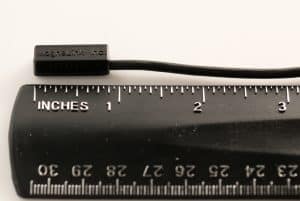What is a Hall Effect Sensor?
Hall Effect sensors are used for detecting and measuring proximity, position, and speed, through their ability to sense magnetic fields. As non-contact sensors, they are useful for measuring AC and DC currents. This blog will explain the principles behind Hall effect sensors and their industrial applications.
What is a Hall Effect Sensor?

When electric current traverses the sensor is in a magnetic field, the detector will register a small voltage. This voltage can be used to measure fluctuations in the magnetic field caused by changes in position, proximity, pressure, speed, temperature, or other factors.
Since Hall Effect sensors do not have any moving parts, they are more robust and durable than reed switches. However, they are also more expensive since they need a constant electrical current flowing through them.
Types of Hall Effect Sensors
Hall Effect sensors are broadly divided into two categories: analog and digital. The analog sensors produce a continuously varying voltage output while the digital version has just two output voltages: high or low.
Some of the sub-categories for Hall Effect switches include:
Vane-operated
These are digital proximity sensors that detect the presence or absence of a ferrous vane that passes through a gap between the two components of the vane-operated sensor: a permanent magnet and a Hall Effect sensor.
Digital current
This sensor also has two components in close proximity: a Hall Effect sensor and an electromagnet. The magnetic field produced by the electromagnet when current passes through its coils changes the output of the Hall Effect sensor.
Linear current
This is similar to the digital current sensor, except the output is analog.
Closed-loop current
Also called null balance current sensors, they work by nullifying the magnetic field being sensed by driving a current derived from the sensor output. Though they have excellent response, accuracy, and linearity characteristics, they are bulky and expensive due to the additional components required to generate the null balance current.
Gear tooth
As the name implies, these sensors detect the teeth of a gear as they pass by the sensor. Gear tooth sensors are similar to vane operated sensors but have additional circuitry to accurately measure speed. They are used in a variety of counting and speed sensing applications.
Applications for Hall Effect Sensors
As evident from the various categories of sensors mentioned above, Hall Effect sensors can be used for a wide range of applications, such as:
- Automated product handling
- CNC equipment
- Compactors / Balers
- Motion detectors
- Position sensors (ex: doors)
- Robotics (ex: limit switches)
- Safety interlocks (ex: defeat resistant safety switches)
Considerations for Hall Effect Sensor Design
The important factors that influence the design of a Hall Effect sensor include:
- Magnetic fields. The field produced by a magnet depends on its shape and size, the material used to construct it, the material in the path of the magnetic flux, and whether it is used as a unipolar or bipolar magnet.
- Electrical considerations. What is the maximum current the sensor will have to handle? Is there a constant voltagesupply available to supply the sensor? What is the maximum flux it will experience? Should the output be analog or digital?
- Operating environment. The temperature range over which the sensor must operate is an important environmental factor. Outdoor applications may require weatherproof housing for protection from rain and snow.
- As with all industrial components, cost is an important issue with Hall Effect sensors. The operating temperature range, packaging requirements, precision and sensitivity of the output, and other features required by the application determine the final cost of the Hall Effect sensor.
Hall Effect Sensors from MagneLink
MagneLink has over 25 years of experience designing high-quality custom magnetic switches and sensors. Get in touch with us for all your Hall Effect magnetic switch requirements.

